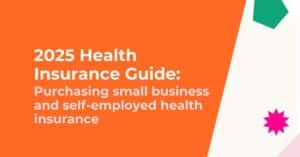When I’m not sure what to watch, I put on Shark Tank reruns. Recently, I saw one where the sharks encouraged two founders to stay on their very profitable self-funded organic growth path. “No!” they cried. “We have to scale!”
But why? Why would they work a lot harder to make less money in a more competitive space?
Very few businesses have the opportunity to scale at the level needed to get venture investment. And 98% of US companies are self-funded. So what does it mean when a self-funded founder says “scale”?
Most of us say scale when we mean growth
If scale is on your mind, do yourself a favor: start by being clear about what it means for you. For true scale, you need to perform each unit of work more efficiently.
When I ask self-funded founders what they mean by scale, I hear one of the four things below. Think about which of these describes what you’re trying to accomplish. By using the more precise word, you’ll get more aligned support from your professional partners and better results from your team.
Repeatability
Repeatability is what most self-funded founders actually mean when they say scale. They want foundational systems, offerings, and processes.
Whether you’re early in your business life, you’ve been in sandbox or skunkworks mode: try stuff and see what works. But doing everything differently each time makes it hard to grow and impossible to delegate.
Repeatability means knowing your customer and standardizing your core business functions. Less is more – pick your top offer or thing you want to be known for. Shape it into something that you or someone else can do with 80% repeatability each time.
Start with one audience and one flagship product or service. The foundation of scale is getting really good at one thing, sometimes called product / market fit. I’m not asking you to table your Oprah Holding Company Chair vision forever, just for 6-12 months. You’ll grow and improve faster when you focus.
Hiring
In my analyst training, the first directive we got was: solve this problem without technology, people, or money. But there reaches a point where you need some humans who show up regularly and know how to do specific jobs.
The conventional wisdom is that you should hire W-2 workers. Scale in this case comes from them working at a fixed rate, potentially for a lot of hours without any additional pay.
But employing humans also means dealing with their feelings, conflicts, and personal development, not to mention pay requests, sick leave, and demands for company policies. Not every founder wants to manage people.
If you’re trying to grow as fast as possible to the biggest revenue possible, W-2 hires are most often the way to go. If you’re running a high-profit business, you can use sourcing and consultants, or a combination that suits you. If you’re designing a financially healthy business that fits your life, you have more choices.
Think about this: what low-value work or things that you hate should no longer be part of your job? How could you do it? If the solution is humans, who could do it?
Organic Growth
“I want to double my revenues!” Organic growth might mean growing 2x, 3x, even 4x in a single year. But it’s up to you to decide that number. Organic growth comes from using the money, customers, and resources you have to drive sales growth.
I’ve seen profitable organic growth of 2X – 3X be sustained over a period of several years. When you’re intentional and how and why you want to grow, you plan for sustainable growth levels. You learn to tune the business to the outcomes you want. And if it’s not feeling right, or you find a place that feels good, you can pause or adjust without worrying your investors or board will fire you.
You can also really get to know your customers and build loyalty.
You will be re-investing your profits to accelerate new customer acquisition, hiring, and potentially secondary offerings or a new idea. The idea is to continue to operate profitably from every sale to have money left to fund your own growth plan.
Self-funded organic growth strategies may include using debt or credit, royalty or licensing deals that pay as you go, or perhaps even an aligned angel or individual investor. Typically, though, organic growth does not involve significant rounds of capital or dilution of your equity ownership.
Hyperscale
Hyperscale is usually why you go on Shark Tank, and why they ask all those questions about your margins and sales to date.
Hyperscale is pouring money and people into what you’ve got to make it grow really fast to a really big overall revenue number. These are the types of companies that are backed by equity investors and venture capital.
Most businesses will not hyperscale. And in fact few of those that hyperscale actually operate profitably.
That’s a big part of the reason only 2% of companies ever get venture capital investment. You must have a very large potential market and be ready to grow astronomically fast, indefinitely. You should also have a product or service that is easily produced or replicated.
If 2% of companies get venture investment, that means 98% of businesses don’t. That’s completely okay. There are lots of ways to be a healthy, sustainable business at a variety of sizes and growth levels.
Self-funded founders may find that once they’ve proven their idea, a strategic investment for hyperscale is an option. But it remains up to you whether you want to take that path. Your pace and volume of scale is up to you.
In Conclusion
Forget the generic advice: scale is completely relative to your personal and business goals. Getting as big as possible or hitting a specific revenue number does not define your success.
If you’re in a business that doesn’t scale but you love it, don’t let anyone talk you out of it. But if the business stops working for you and you want to change that, evaluate where you are in your journey and what support you need to support you in the next phase of scale.
Are you a self-funded founder ready to define and accelerate your growth path? Schedule a 30-minute strategy session and we’ll share our ideas. Grab your spot now.



